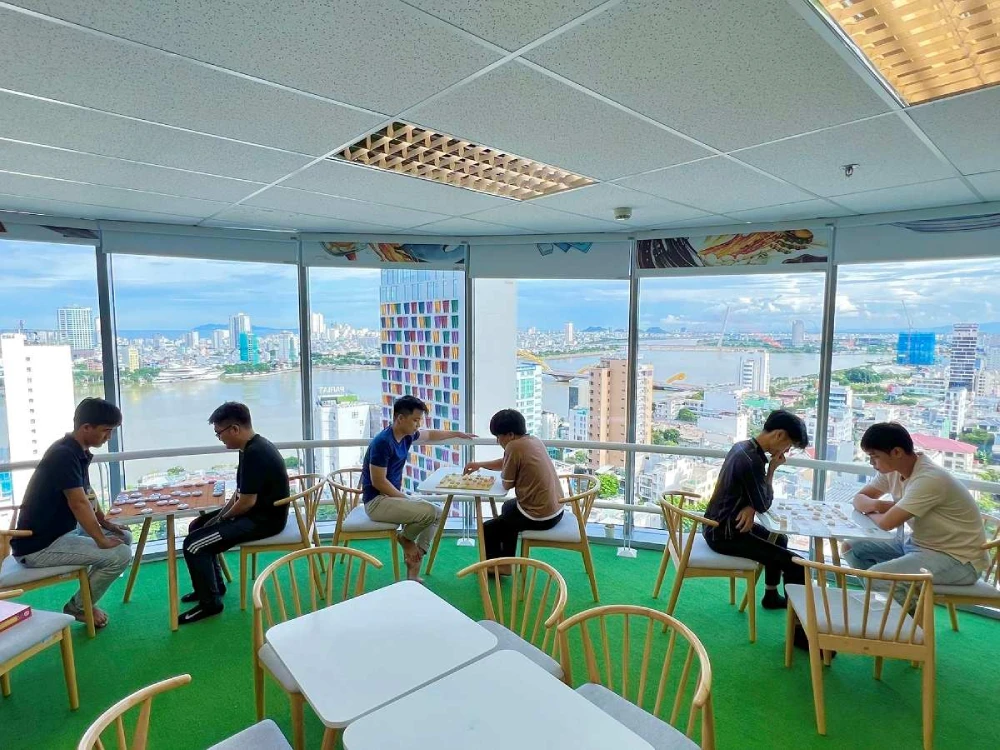When it comes to offshore software development, there are a few different engagement models to choose from. One of the most popular is the ODC.
In this article, Saigon Technology will compare ODCs with other engagement models and show you how to set up your own.
Definition
An ODC is a remote facility where software development takes place. ODCs are usually located in countries with lower labor costs, such as India or China. Companies use it to reduce the cost of software development projects.
ODC vs Other Engagement Models
| Engagement Model | Description | Pros | Cons |
| Onshore Outsourcing | Hiring a company based in your own country | – High control
– Easier communication and legal alignment |
Higher cost |
| Nearshore Outsourcing | Hiring a company in a nearby country | – Lower cost than onshore
– Similar time zones and cultural overlap |
Less control than onshore |
| Offshore Development Center (ODC) | A dedicated team of developers working remotely in your time zone | – High control
– Dedicated team – Seamless integration |
Can be more expensive than flexible models |
| Other Models (e.g., Staff Augmentation) | Provider supplies developers on an as-needed basis (not dedicated) | – Flexible
– Cost-effective – Quick resource scaling |
– Less control
– No dedicated team or long-term ownership |
How to Set Up
There are a few key things to keep in mind when setting up your own. Here’s what you need to do:
1. Choose the right location
You’ll want to choose a location that is conducive to productive work and has a good quality of life. India, China, and the Philippines are all popular choices.
There are a number of factors to consider, including:
- The cost of living in the country
- The availability of skilled workers
- The time zone difference
- The legal and political stability of the country
- The cultural fit between your company and the country
2. Find a trusted partner
Once you’ve chosen the right location for your ODC, the next step is to find a trusted partner who can help you set up and manage your offshore team. This partner should have experience in setting up and managing, as well as a deep understanding of the local market. They should also be able to provide you with a dedicated team of developers who are skilled in the technologies you need.
3. Set up the infrastructure
After choosing the right location and a trusted partner, you’ll need to set up the infrastructure. This includes everything from renting office space to setting up communication and collaboration tools.
Here are a few things you’ll need to take care of:
- Renting office space: You’ll need to find a suitable office space for your team. Make sure to choose a location that’s convenient for your team and that has good infrastructure.
- Setting up communication and collaboration tools: You’ll need to set up communication and collaboration tools, such as email, chat, video conferencing, and project management software.
- Hiring staff: You’ll need to hire staff, including managers, developers, testers, and support staff.
- Training staff: Once you’ve hired your team, you’ll need to provide training on your company’s processes and tools.
- Setting up quality assurance: You’ll need to set up a quality assurance process to ensure that the software developed by your team meets your quality standards.
- Setting up security: You’ll need to set up security measures to protect your company’s data and intellectual property.
4. Get legal support
Before you can start operating, you’ll need to get legal support. This includes getting the necessary visas for your team members and ensuring that your ODC complies with local laws and regulations.
You’ll also need to sign a contract with your offshore partner. This contract should outline the scope of work, deliverables, timeline, and cost.
Get in touch with a lawyer who specializes in setting up to get started.
5. Organize HR payroll and support
You’ll need to take care of HR payroll and support. This includes setting up a payroll system for your team members and providing them with benefits, such as health insurance.
You’ll also need to provide training and development opportunities for your team members. This will help them stay up to date with the latest technologies and keep them motivated.
Hire the right people: Look for experienced software developers with the skillset you need. It’s also important to find team members who are culturally compatible with your company.
Manage expectations: Be clear about what you expect in terms of deliverables, timelines, and quality.
Things to Consider Before Setting
There are a few things you need to keep in mind before setting one up. Here are a few tips:
- Define your goals and objectives: What do you hope to achieve by setting up an ODC? Make sure your goals are realistic and achievable.
- Do your research: There’s a lot to know about setting up, so make sure you do your homework before getting started.
- Find the right partners: It’s important to partner with reputable and experienced companies.
- Put together a solid plan: Once you’ve done your research and found the right partners, it’s time to start putting together a plan. This should include everything from choosing a location to setting up your office space.
Final Thoughts
ODCs can be a great way to save money and improve efficiency in your software development process. However, there are some things you need to keep in mind before setting one up. Make sure you do your research and understand all the costs and risks involved.








